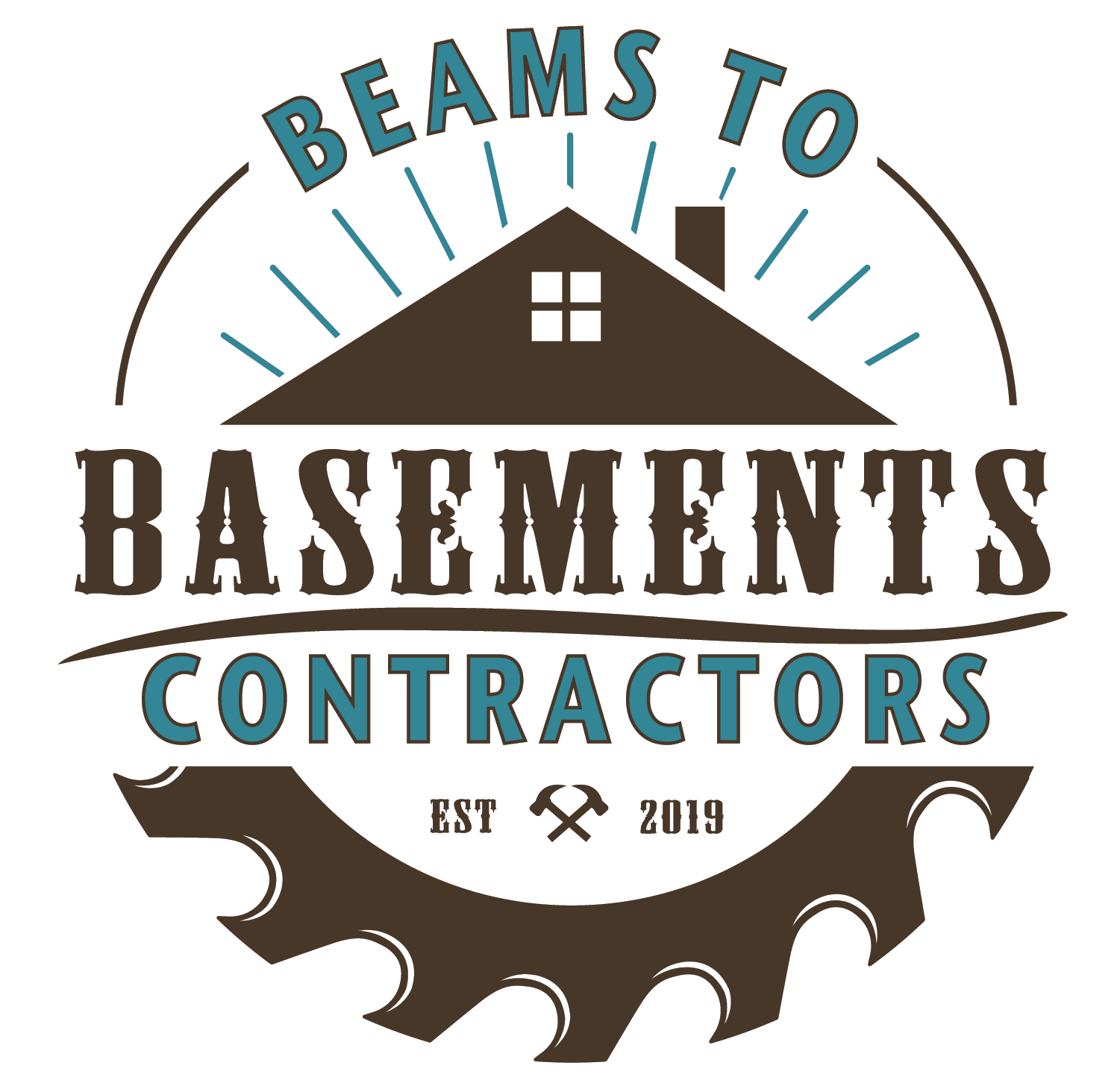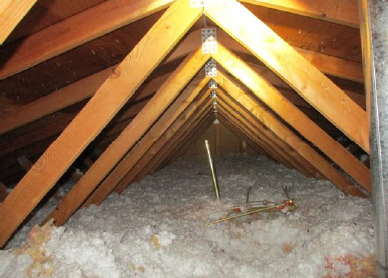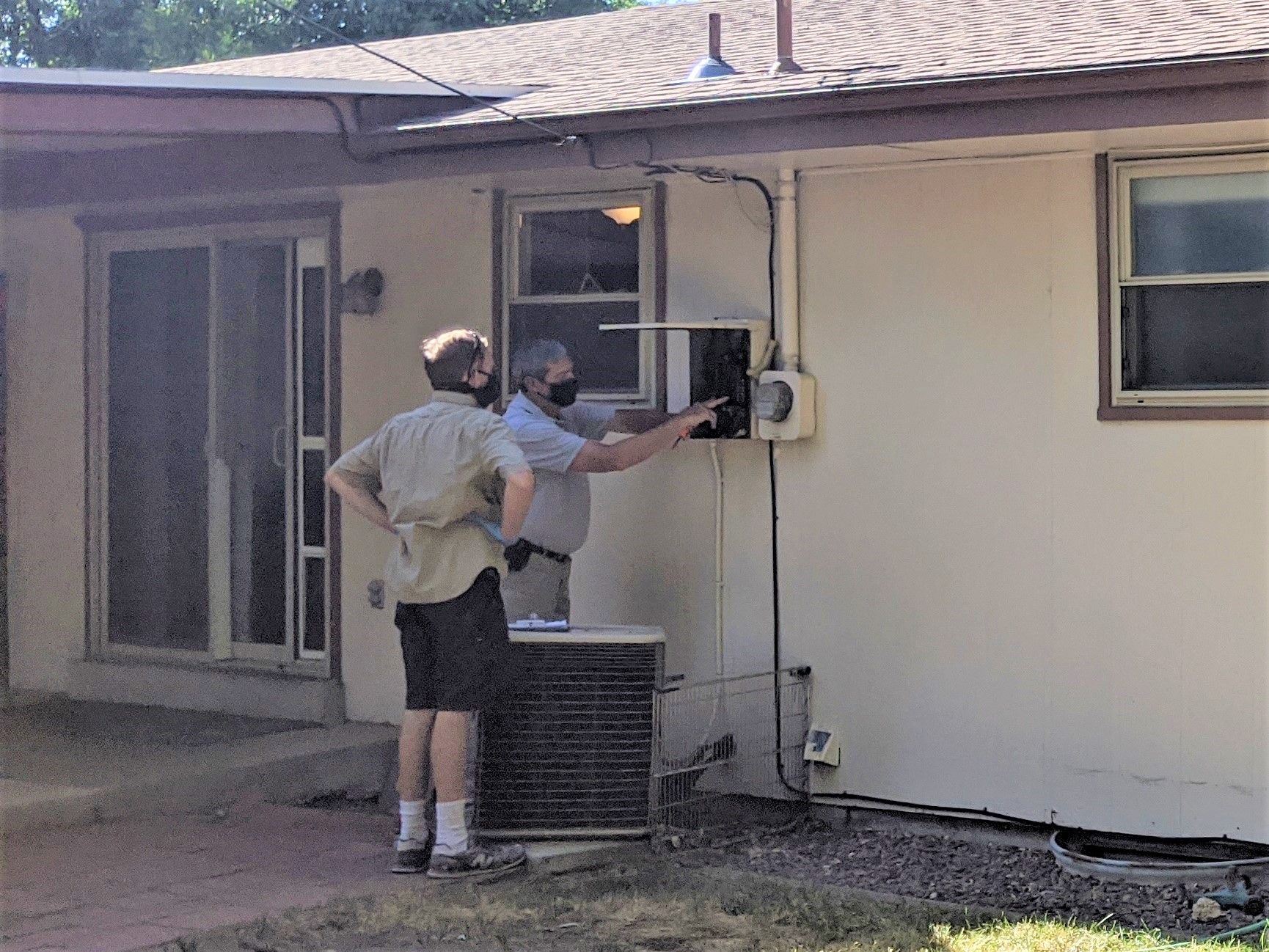Story #5
As general contractors, we’ve seen symptoms of strange or even unsafe prior work in homes across the Front Range, so we strongly recommend hiring a certified home inspector to determine a house’s condition before buying it. Their thorough investigation can identify significant concerns that can be negotiated with the seller or give a valid reason to walk away from a bad deal. We think this topic is such an important part of your due diligence when buying property that it’s our first 2-part story. Today, we’ll explain what is and isn’t part of the typical home inspection. Tomorrow, we’ll share the findings and timing of the inspection report on our first home.
Josh was trained as a carpenter building high-end, custom homes, so he can spot poor craftsmanship immediately. Yet we still hired a professional home inspector and included an inspection contingency in our offer. We didn’t just rely on Josh’s expertise. This is the biggest purchase either of us has made, so we needed to make sure we didn’t miss major, costly issues in our excitement to buy a house. Additionally, we started our homebuying journey during the coronavirus pandemic. Colorado’s public health regulations to slow the spread of COVID-19 limited home viewing appointments to only 15 minutes, so we didn’t have enough time to do a thorough investigation ourselves before submitting our offer. However, Colorado homebuyers can still attend the complete inspection with the home inspector (with masks & other precautions).
The home inspector is an impartial evaluator of the home and its permanently installed, readily-accessible systems and components. The purpose of the inspection is to identify the visible issues that affect the construction, general maintenance, and overall safety of the property. It’s like a doctor’s physical examination for a house, without any lab work or invasive procedures. Combined with other information, like building permit records, the home inspection report can help assess the value of a property and potential repairs needed. While the sellers have to disclose any issues they may know of, many homeowners are surprised to learn of the faults discovered through an inspection.
We had more time (2 hours) at the house on our inspection visit than the original viewing and we could see more of it, like checking the shingles on the roof and attic insulation. Our home inspector, Dan Schenkel, walked the site and exterior of the property to check components like the driveway, siding, electrical panel, and storage sheds. Then, he explored inside, too. He also tested all of the major appliances. He measured the temperature in the fridge and from the AC to determine if they worked efficiently. He also looked for signs that the furnace and hot water heater were properly maintained. He even started a cycle in the washing machine, so we knew that it didn’t leak or make horrible noises. Finally, he tested a random sample of other elements in the home that are used a lot, such as outlets, light switches, and windows, to make sure they generally worked.
HOME BUYING TIP
There are a few things that are NOT part of a typical home inspection. The inspector doesn’t move furniture, take things apart, or otherwise disturb the seller’s belongings. Things that are underground or concealed, such as plumbing and wiring in walls, aren’t included. Also, the inspector may comment on building code-related issues (as Dan did), but the inspection isn’t a code compliance or safety check. You may choose to hire or add a separate testing service for potential issues like mold, sewer scope, septic system, and home energy audit. In Colorado, radon is a naturally occurring, radioactive, colorless, odorless, tasteless gas that can cause lung cancer. We didn’t pay for radon testing before we bought the home because we have to test it after we finish the basement (and we’ll share that story, too).
OTHER STORIES




